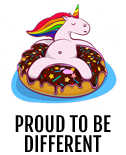Strawberry I am going to try and help you the best way I can. Im obv not the best digital painter around so the advice I give may or may not be the best advice you ever receive but what the hell.
When I start painting, I usually do a 10 minute sloppy lineart. It doesnt have to be the best line art ever it just needs to establish your basic ideas.
After I construct a basic lineart either I make a more detailed advanced lineart or if I just want to construct it without it I start placing my basic colors
So how I pick colors is pretty simple. I start with some base colors. I tend to use duller colors for my base colors and then add onto that. For example, with the colors I picked above I used a basic green. Usually the base colors I use are located in the middle of a palette square (idk what you call it)
Then for shadows I change the saturation and hues of my colors. Usually for shadows I tend to make them more saturated. For the example above, I used a Blue-ish purple. The more bold you are the better the outcome is usually and the more realistic it looks. For the highlights I use more of a yellow green. I would encourage you to be maybe a little bit more bold but you can always change the contrast later. Right now I just need to establish basic highlights/shadows.
I do not use green for the shadows/highlights. I make sure to incorporate a different color into the picture!
Now I start establishing my ideas a little more. I mess around with shadows and try to establish my lightsource a little better and incorporate details. I know that it is a big difference from pic one because it is. It took me 5-6 hours to get to step two. x;
For midtones I just mix my base color with my highlights/shadow colors in order to get the midtones. To make midtones even more interesting I would suggest changing the hue around a bit. The more interesting you are with your colors the better the outcome will look. The idea is not to have a linear progression of colors and hues but instead have it range and jump. Colors dont progress in a linear fashion therefore it looks weird when you paint that way. The more dynamic you are with your colors the less flat something is going to look. Also when I paint I try and limit the amount of colors I use. It helps you stay consistent and you wont have that clay looking effect.
With digital painting the biggest thing I can stress to you is that in order to make something semi decent it takes like 20+ hours unless you have a bunch of experience. But when you first start out its going to take forever. You just gotta keep trucking along. Sometimes you might spend 2 hours on something only to realize that it looks awful and you have to redo everything. Its just how it is.
This is where I go "Hey I think the colors are too dull on the tree therefore I am going to bump up the contrast a bit"
I also try to establish my highlights a little better.
Note I am sort of pillow shading. It looks way better if again, you dont progress in a linear fashion from highlights to shadows. But w/e someone else can explain that x;
The last bit is me detailing/playing around. This process prob took around 10 hours. It was just me detailing away. There were a lot of times I had to redo something because i didnt like it.
Like I said if I had been more dynamic with the colors and didnt pillow shade and took a risk it would of looked better. Taking risks is the best learning thing you can do. Even if it turns out bad you at least know what not to do and take a different approach.
When painting, I try and constantly flip my image horizontally. Like every 15 minutes or so. It really helps you find what is wrong with your picture. I would suggest doing that next time you draw a person. If something looks off, flip the picture and instantly the mistakes will appear.















